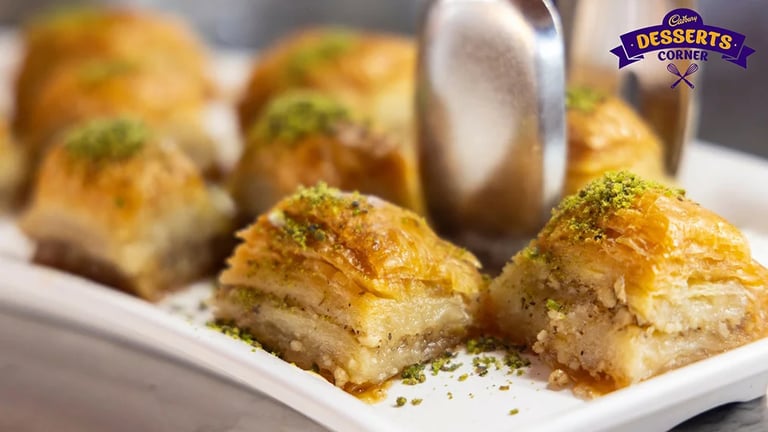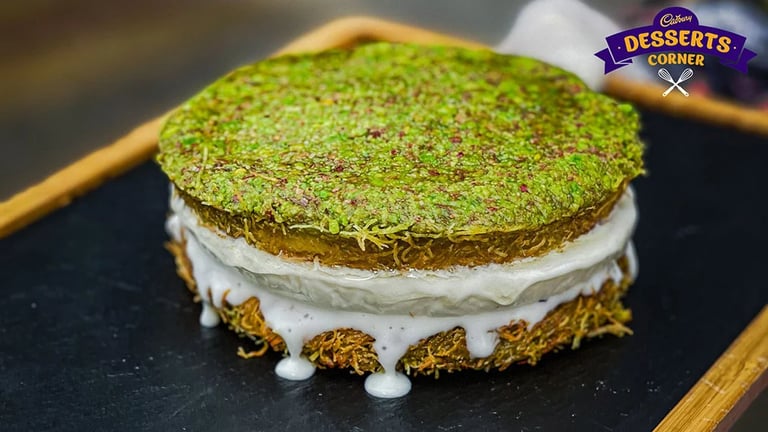- Home
- Articles
- 8 Desserts From Lebanon That Will Instill in You an Appreciation for Middle Eastern Sweets
Delicious kababs and shawarma aside, Lebanon boasts of its own Middle Eastern sweets that are infused with orange blossoms, sugar, and nuts that will redefine your love for desserts.

Delicious kababs and shawarma aside, Lebanon boasts of its own Middle Eastern sweets that are infused with orange blossoms, sugar, and nuts that will redefine your love for desserts.
This Middle Eastern coastal country overlooks the sapphire waters of the Mediterranean Sea and is known for its architecture and as much as its cuisine. Their desserts reflect their ages-old heritage which has been shaped by the rise and fall of the Romans, French, and Ottoman empires.
Lebanon has an array of desserts and not just meaty shawarmas, hummus, and fattoush. There are some people and places that serve the hate crime called chocolate shwarma, but we are not here to shade them. Let’s get down to sweet business and actually look at the diverse offering of desserts that Lebanon has to offer.
1. Baklava

Originating from the Middle East and enjoying massive popularity in Lebanon as well, baklava is a sweet pastry made of many thin layers of filo dough filled with chopped nuts. It is known for its light, flaky texture contrasting with crunchy nuts. Syrup or honey binds the layers and infuses the pastry with moisture and flavor. Baklava is a staple dessert across the region.
2. Shaabiyat
Shaabiyat is a buttery pastry filled with cheese, nuts, or dates and is a little similar to the baklava, but not entirely. The dough is made from butter, flour, and milk, then rolled thin and stuffed. Commonly seen varieties include jibneh shaabiyat (filled with soft cheese like ricotta or mozzarella) and ajweh shaabiyat (filled with dates and nuts). After filling, the pastries are folded or crimped closed and baked until golden brown. Shaabiyat have a melt-in-your-mouth texture and satisfying savory or sweet filling.
3. Knafeh

Knafeh is a sweet cheese pastry or dessert originally from Nablus, Palestine. It is made with kataifi noodles (shredded filo dough) and soft, creamy cheese, most often Nabulsi or brined cheese. The ingredients are layered and baked, then drizzled with rose or orange blossom syrup. As it bakes, the kataifi noodles crisp up while the cheese stays creamy inside. Knafeh has a unique texture with crispy, crunchy layers surrounding a rich, smooth cheese center. It is enjoyed as a special treat on festive occasions.
4. Maamoul
Another popular Middle Eastern confection that also enjoys popularity in Lebanon, Maamoul are shortbread-like cookies traditionally eaten during the holy festivals of Eid al-Fitr and Eid al-Adha. Maamoul comes in various forms—some are filled with dates or walnuts, while others have no filling at all. The dough is made from semolina and butter, giving it a light, crumbly texture. Before baking, intricate designs are pressed into the tops using special molds. Maamoul is enjoyed year-round in many homes as well as specialty shops.
5. Atayef
Atayef is a beloved Ramadan dessert throughout the Levant. They consist of small, pancake-like cups made from batter. The cups are then filled with clotted cream or cheese and fried until golden brown. After frying, atayef are drenched in a simple syrup made from sugar and rose water, which infuses them with floral sweetness. Atayef stalls and shops see huge crowds during Ramadan eager to indulge in the hot, sweet treat. The delicate yet decadent pastries hold cultural significance for bringing people together during Islam's holy month.
6. Meghli
Meghli is a semolina-based pudding that is a specialty of Tunisia. To make it, coarse semolina is slowly cooked in milk with sugar until it forms a thick, creamy consistency. Meghli has a soft, spoonable texture that is almost porridge-like. It is often flavored with orange blossom water or rose water for a delicate floral note. Enjoyed warm or chilled, meghli makes for a comforting dessert. The pudding holds significance in Tunisian culture, often being prepared for special occasions and served with dates or nuts for extra flavor and texture.
7. Halawet El Jibn
Halawet El Jibn, meaning "sweet cheese" in Arabic, lives up to its name. This Egyptian specialty consists of soft white cheese, often gibna bayda, which is soaked in a simple syrup. The syrup can be flavored differently based on regional preferences, sometimes with rose water, mahlab spice, or orange blossom water. After soaking, the sweetened cheese is served in small portions, such as wrapped in filo dough or on a stick. Bite-sized and rich, halawet el jibn is a beloved treat throughout the Middle East.
8. Layali Lubnan
Layali Lubnan is a traditional Lebanese dessert that makes for a light and refreshing treat. A semolina pudding layer is placed on the bottom and topped with ashta, which is a silky cream similar to whipped cream. Crushed pistachios are sprinkled over the ashta for texture and flavor. Then, an orange blossom syrup is poured gently over the top to coat the dessert. The floral syrup soaks into the layers below, integrating the flavors. While the pistachio pieces mixed with orange syrup may seem like an unusual color combination, the flavors complement each other perfectly.
Like This Article?
More Like This




Popular Articles





Trending Web Stories
Curated Recipes


















